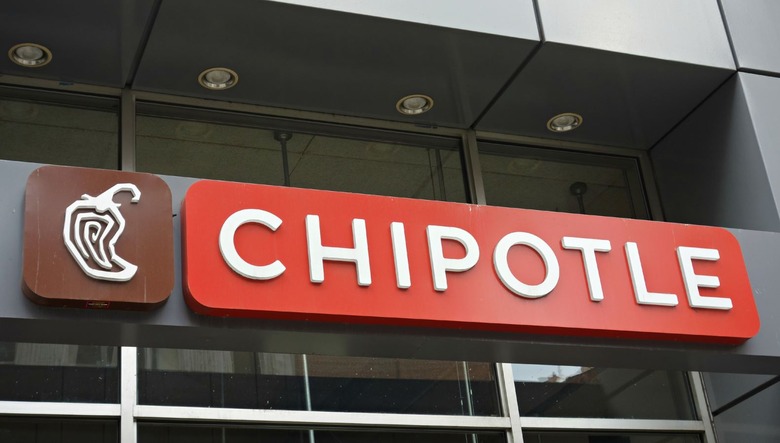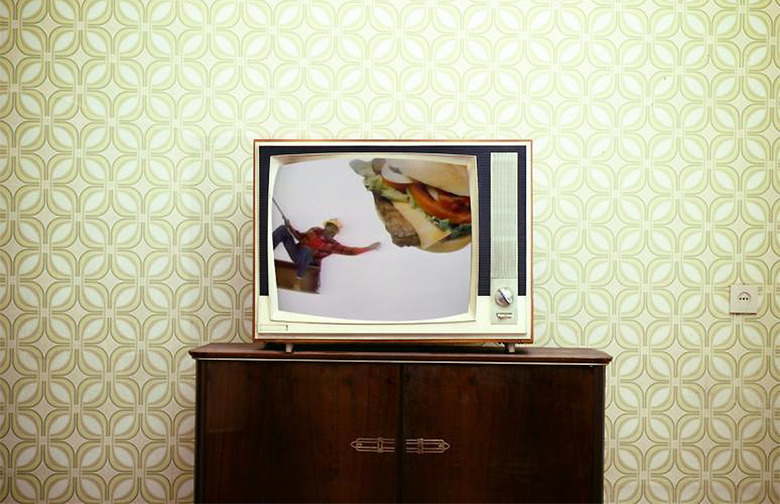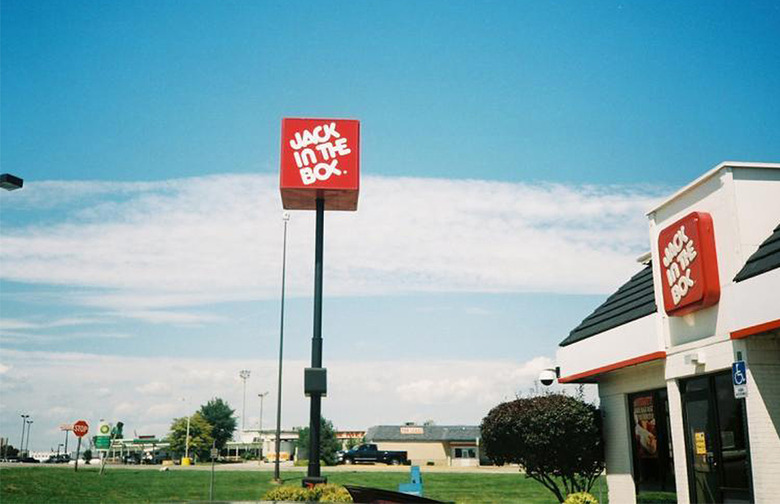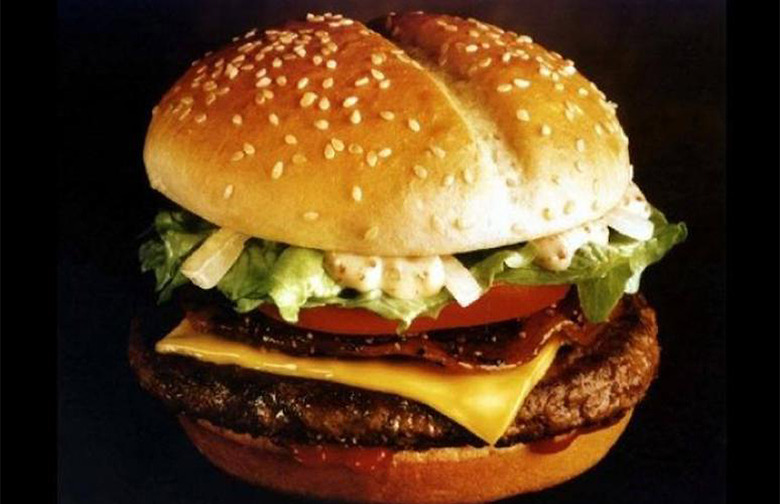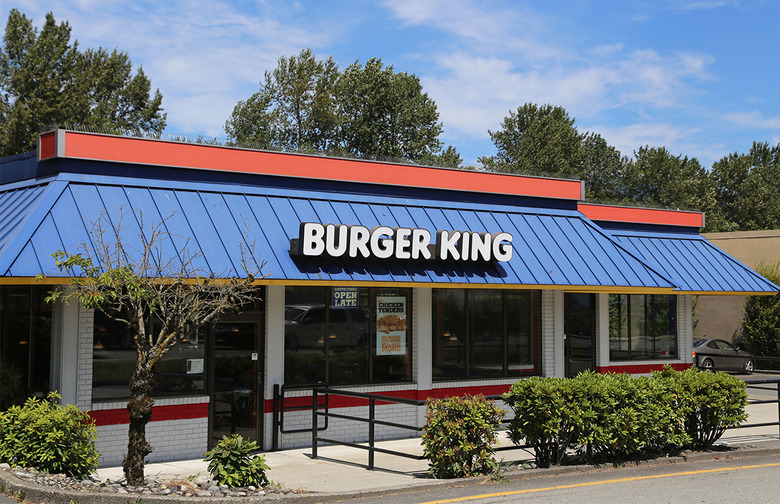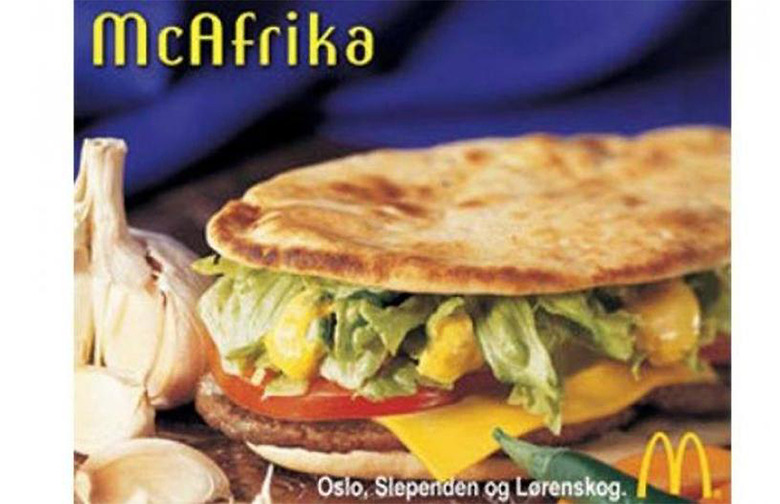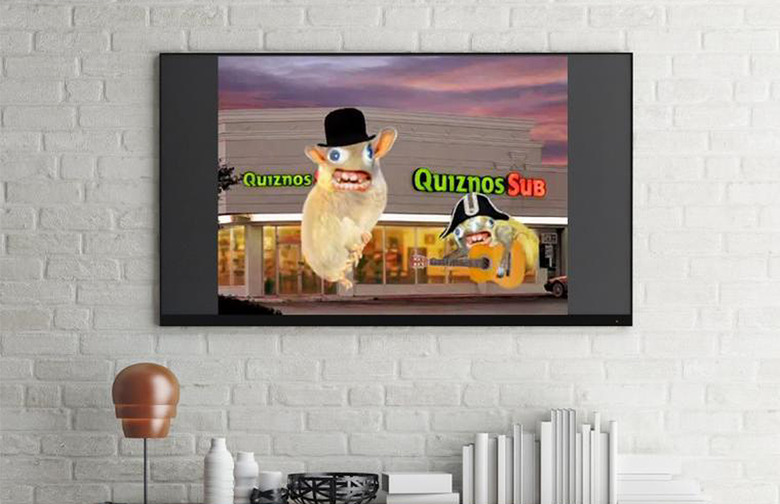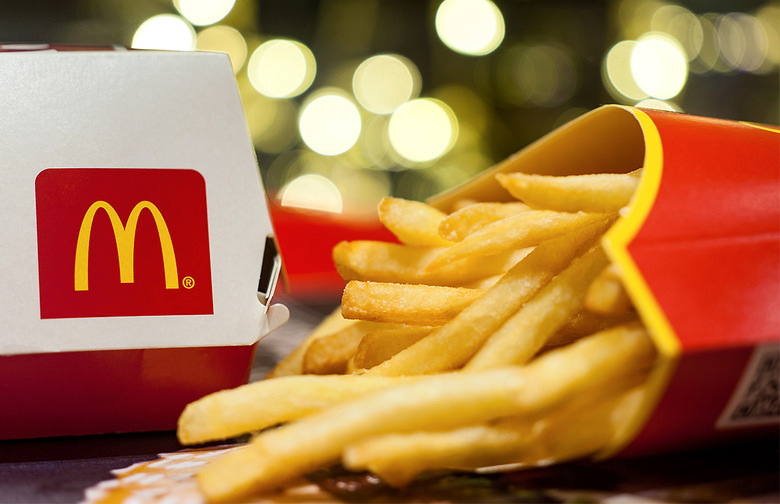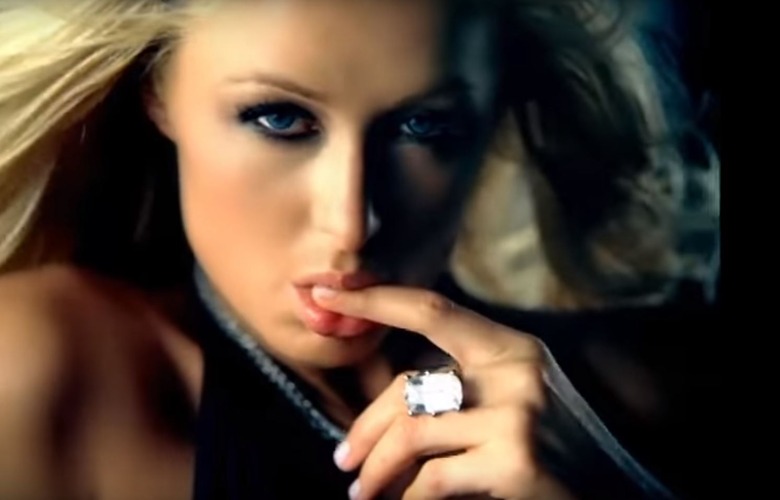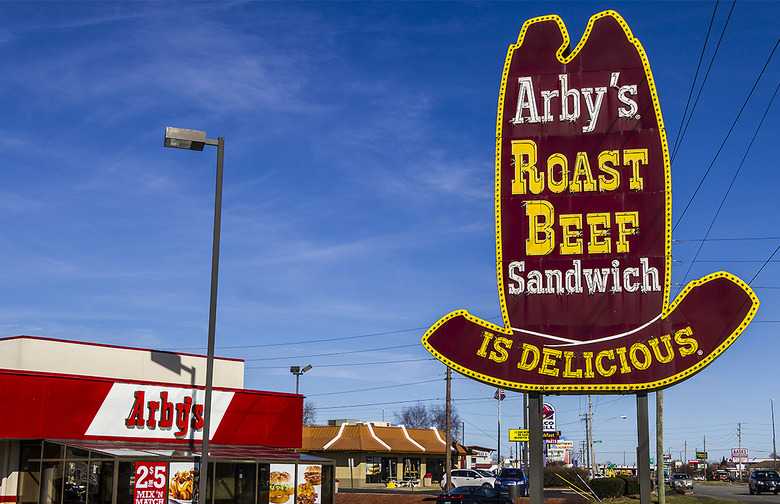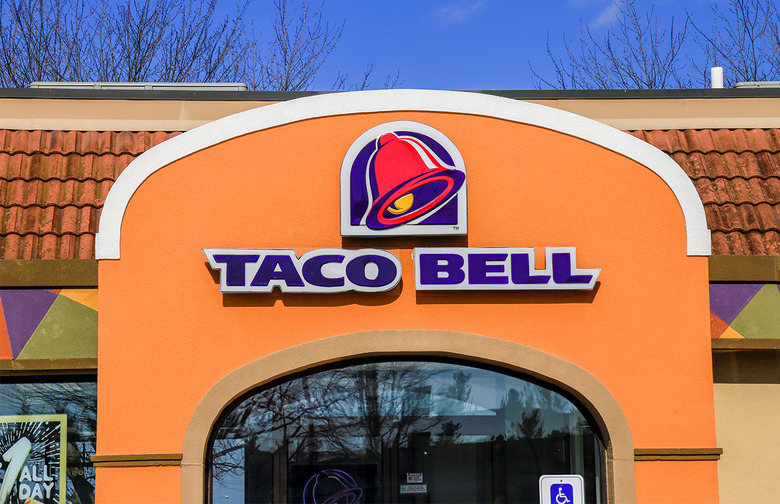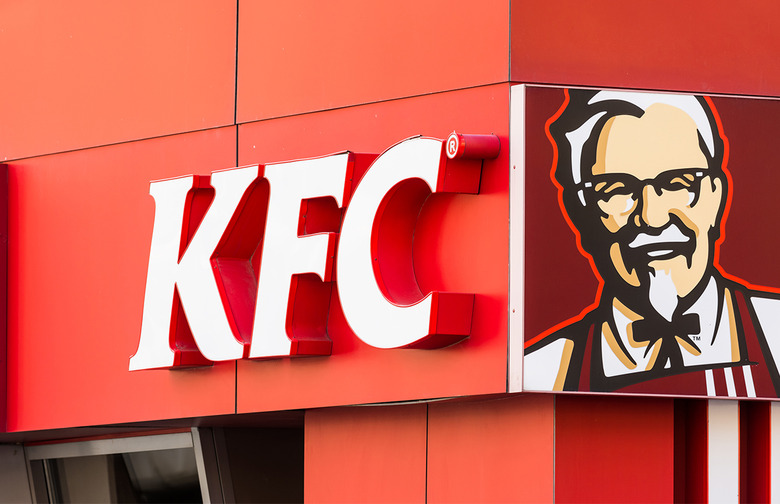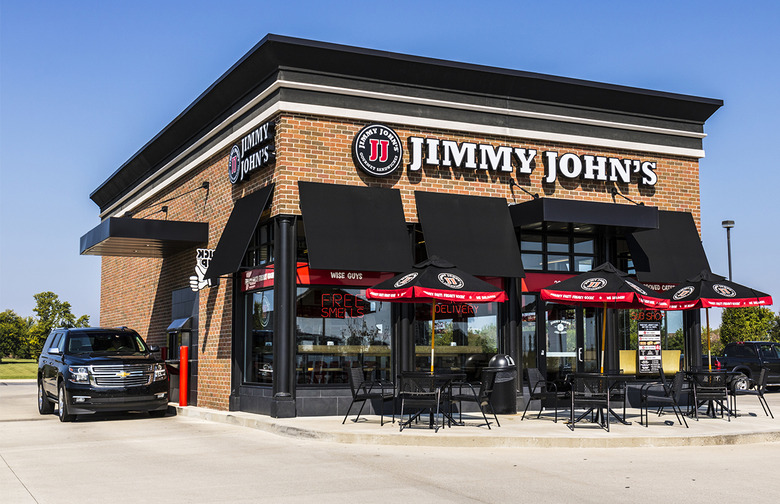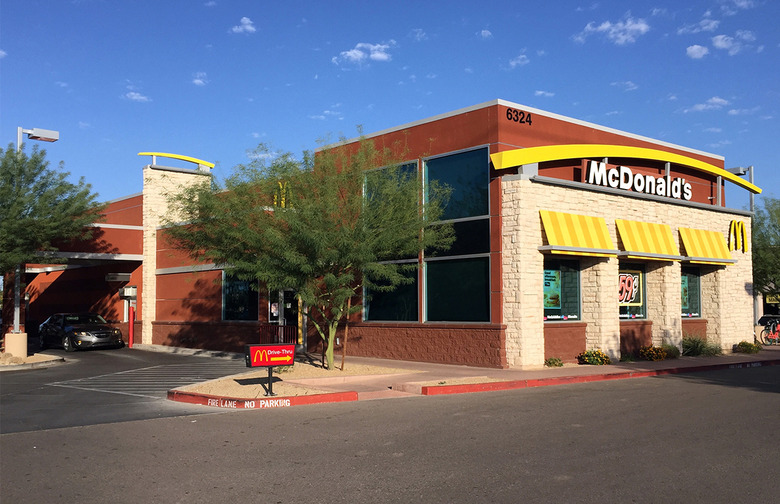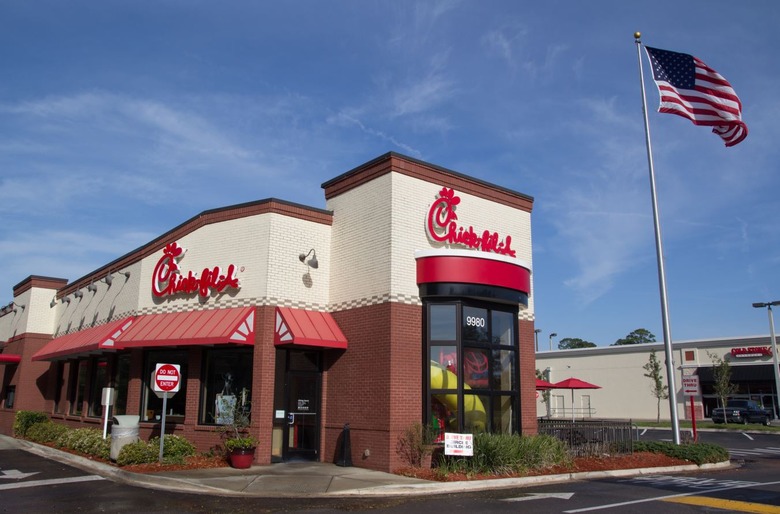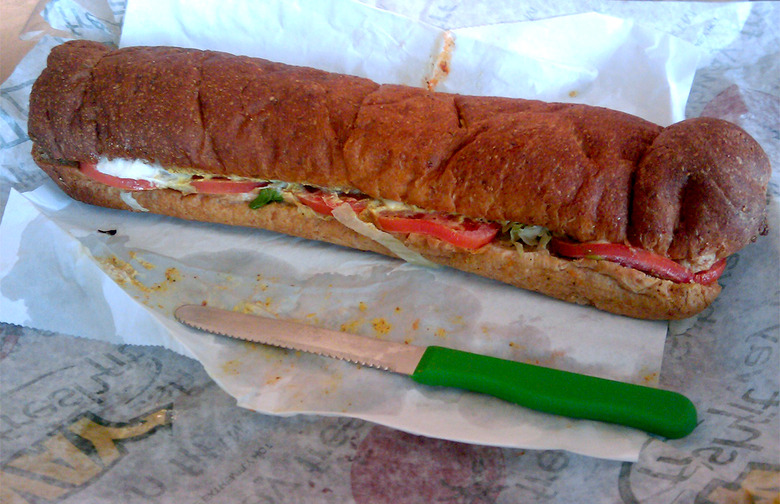The Most Notorious Moments In Fast-Food History Gallery
The folks who run America's biggest fast-food chains really like it when their days are boring. When there aren't any fires to put out, when no reports of food poisoning or Twitter hacks come down the pipeline, when the PR team doesn't have to go into crisis mode. But unfortunately for them, those moments of tranquility don't come nearly often enough. Thankfully, truly notorious moments in fast-food history are still relatively rare, but there have been plenty of moments in the past 30 or so years that have gone down in history as infamous.
1987: Wendy’s Launches the Disturbing “Give a Little Nibble” Campaign
Remember Wendy's big follow-up to the legendary "Where's the Beef?" campaign called "Give a Little Nibble"? Neither does anybody else. The unsettling 1987 commercial, in which customers yanked handfuls of ground beef from a giant burger, was supposed to launch a new campaign that would propel the brand back to relevancy, but instead it just weirded everybody out. It was pulled after seven weeks, and the ad agency behind it was fired.
1993: Jack in the Box’s E. coli Outbreak
The most infamous food poisoning outbreak in history, which nearly forced Jack in the Box out of business, sickened 732 people with E. coli. Seventy-three locations across California, Idaho, Washington, and Nevada served undercooked patties (a specially promoted "Monster Burger" wasn't cooked long enough to kill off the bacteria). Four people died, all of them children.
1996: McDonald’s Arch Deluxe Bombs
McDonald's spent more money on the advertising campaign for the Arch Deluxe in 1996 than it had on any other single item in its history. Costing the company more than $150 million to market, the Arch Deluxe — a quarter-pounder on a split-top potato bun — flopped, making the sandwich a very expensive mistake. The burger was geared toward adults, with add-ons like circular peppered bacon, leaf lettuce, Spanish onions, and a mustard-mayo sauce, and the unconventional ads included kids looking at the burger and saying things like, "I don't understand what the big deal is." When that approach didn't work, new TV ads featured Ronald McDonald out partying and playing pool, a decidedly unpopular shift from the restaurant's family-friendly image.
1997: Big Beef Recall Hits Burger King
An Arkansas-based beef processor named Hudson Foods landed one of its biggest clients, Burger King, in hot water in 1997, when it recalled more than 25 million pounds of beef after E. coli contamination sickened 16 in Colorado. Before the source of the outbreak was discovered, 1,650 restaurants in 28 states, or one out of every four Burger Kings, had to take burgers off their menus.
2002: McDonald’s Launches the Tasteless McAfrika
Over the years, McDonald's has released international products in different locations across the world, some to great success. However, in 2002, it released one of the worst menu items and marketing flops in the company's history. The McAfrika (consisting of beef, cheese, and vegetables in a pita), was released in Norway (one of the world's richest countries) during some of the worst famines Southern Africa had ever seen. The campaign backfired so miserably that McDonald's took the item off its menus and set up donation boxes for charities in support of famine relief in Africa. In an inexplicably boneheaded move, the company re-launched the sandwich (complete with an "exotic African sauce") in 2008 to promote the 2008 Beijing Olympics, and – surprise! – it also received an extremely negative response.
2003: Quiznos’ Tries to go Viral With Spongmonkeys
The Spongmonkeys first appeared on animator Joel Veitch's rathergood.com in 2003, and became an early viral success. Featuring two creepy-cute creatures with big staring eyes and humanoid mouths singing wacky songs like "We Like the Moon," they became hits among the prime target demographic of young guys. So when Quiznos decided to commandeer them for their own advertising purposes, they thought that it would have the same viral effect. Instead, it was just bizarre, and one of the biggest fast-food ad blunders of all time.
2004: 'Super-Size Me' is Released
In the mid-1990s, McDonald's launched a campaign allowing customers to "Super-Size" their meal for an added fee. For a while, the idea sold, and customers around the world were bulking up their orders with larger size fries and sodas, as well as calorie counts. After the release of the documentary Super-Size Me, which exposed the unhealthy aspects of some McDonald's fare and fast food in general, the concept of super-sizing went rapidly downhill, resulting in the company pulling it from menus in 2004.
2005: Carl’s Jr. Airs its First Supermodel Ad
Perhaps the most controversial fast-food ad campaign of all time was launched in 2005, with a swimsuit-clad Paris Hilton soaping up and crawling over a Bentley before taking a big bite out of Carl's Jr.'s new Spicy Burger. Watchdog groups like the Parents Television Council were incensed (and the ads were so popular that the Carl's Jr. website crashed), but Carl's Jr. CEO Andy Puzder (who was famously considered for the role of Trump's labor secretary before withdrawing last year) refused to apologize. In fact, he doubled down, and future commercials featured Cameron Richardson (2005), Audrina Patridge (2009), Padma Lakshmi (2009), Kim Kardashian (2009), Miss Turkey Gizem Memiç (2011), Kate Upton (2012), and Charlotte McKinney (2015). In 2017 the company announced that it would replace their risqué commercials with more family-friendly ads.
2005: Human Skin Found in Arby’s Sandwich
An Ohio man sued Arby's for more than $50,000 after biting into a chicken sandwich and declaring he discovered a slice of human skin inside, nearly an inch long. Turns out that the manager was slicing lettuce with a mechanical slicer when he cut his thumb, and he didn't throw away the bin of lettuce, according to a Miami County health report.
2006: Taco Bell Food Sickens 71
In December 2006, 71 Taco Bell customers in five states were sickened with E. coli after eating contaminated shredded lettuce shipped from California, eight of whom suffered kidney failure. In response, California enacted stricter standards for how leafy greens are handled.
2007: Rats Run Wild Inside a New York City KFC/Taco Bell
One of the first social media-fueled restaurant disasters occurred in New York in April 2007, when a TV news crew spotted rats running amok inside a Greenwich Village KFC/Taco Bell and quickly aired it. The video made it to the fledgling YouTube shortly after. The incident made national news and was a major embarrassment for both parent company Yum! Brands as well as New York City (the restaurant had been inspected the previous day and received a passing grade). The inspector was removed from duty soon after, and the restaurant was permanently closed.
2008-2018: Jimmy John’s Trouble with Sprouts
Jimmy John's is no stranger to foodborne illness; sprouts have been linked to salmonella outbreaks in 2010, 2012, and 2014, as well as a 2008 E. coli outbreak. Another multistate salmonella outbreak, traced to sprouts from Minnesota, impacted the Champaign, Illinois-based sandwich chain in January 2018, reported the Chicago Tribune.
2012: McDonald’s Asks for #McDStories, Instantly Regrets It
In January 2012, McDonald's decided to get in on this whole hashtag game by asking people (ideally farmers) to post uplifting things about the chain using the hashtag #McDStories. It quickly became a textbook exercise in the dangers of crowdsourcing, as Twitter users took advantage of the opportunity to tell not-so-uplifting stories, like the one who posted "Once when I was little, I was playing in the McDonald's playhouse and a rusty nail stabbed me in my foot. #McDStories." The chain abandoned the campaign after only two hours. Oops!
2012: Chick-fil-A Ruffles Feathers
Chick-fil-A President Dan Cathy's firm stance against same-sex marriage ruffled plenty of feathers when it was revealed in 2012, and many took to the company's Facebook page to complain. The company responded to the uprpar by saying that "...our intent is to leave the policy debate over same-sex marriage to the government and political arena. ... Our mission is simple: to serve great food, provide genuine hospitality and have a positive influence on all who come in contact with Chick-fil-A." By refusing to address the issue, the company angered even more people, and its reputation took a hit among progressives.
2013: The Subway Foot-long Controversy
In January 2013, an Australian teenager posted a photo of a "foot-long" sub from Subway, with a tape measure clearly reading 11 inches. He posted the photo to Subway Australia's Facebook page, and it quickly racked up more than 100,000 likes. Subway responded in about the worst way possible, saying that "Footlong" is just a trademark, and "not intended to be a measurement of length." Soon, folks all over the world were measuring their sandwiches, and it turned out that few were actually 12 inches. Claims of false advertising ensued, and the company told the Chicago Tribune soon after that that it "redoubled ... efforts to ensure consistency and correct length in every sandwich." Several customers filed a lawsuit against the chain, which has since been settled.
2013: Subway Employees Run Amok
Two employees at a Columbus, Ohio Subway decided to get a little wacky back in 2013, and their exploits went viral and created a major blemish on the chain's reputation. The duo shaped the bread into phalluses and froze their urine in water bottles, and one took a photo of his exposed genitals on top of a raw loaf of bread. These dummies then posted those photos to Instagram, landing them in the fast-food moron hall of fame.
2013: Taco Bell Employee Licks Taco Shells, Goes Viral
A word of advice: if you work at a fast-food chain, don't defile the food in any way. If you do, don't take a photo of it. And if you do take a photo of it, don't post it to social media. In 2013, a Taco Bell employee did just that, posting a photo to his Facebook account of him licking a stack of taco shells. The photo, of course, went viral, but when Taco Bell finally released a statement it was deemed too little, too late by many, and the chain's reputation for cleanliness took a major hit.
2015: Chipotle Takes a Tumble
In 2015, a norovirus outbreak in Simi Valley, California, sickened 243, a salmonella outbreak in Minnesota and Wisconsin sickened 54, E. coli sickened 60 people in 11 states (landing 22 in the hospital), and a second norovirus outbreak in Boston sickened 143. The culprit? Chipotle. While the exact cause of the E. coli and salmonella will likely never be known, the two norovirus outbreaks were caused by sick employees who came to work, the company admitted. The chain implemented several new rules and regulations in order to prevent this from happening again, but its reputation (and stock price) took a major hit, founder Steve Ells was forced to step down as CEO after new sales strategies flopped, and the chain has yet to fully recover.
If you didn't know about some of these, you're not alone: there are plenty of secrets fast-food chains don't want you to know.
